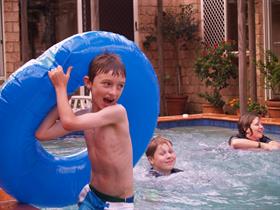Hyperactive or ADHD
Attention-Deficit/Hyperactivity Disorder (ADHD)
Hyperactivity is a common term, often used by parents and teachers. “He’s hyper today.” This does not mean that a child is suffering from ADHD, just that they may be full of energy for that day. For a child to be diagnosed with ADHD, they have to have suffered from problems for at least six months.
DSM-IV TR has criteria for ADHD. Either A or B must be present for a child to have ADHD.
- The child must show six or more manifestations of inattention for at least months to such a degree that is maladaptive and greater than would be expected for the person’s developmental level. For example, careless mistakes, not listening well, not following instructions, forgetful in daily activities, easily distracted.
Or
- Six or more manifestations of hyperactivity-impulsivity present for at least months to a maladaptive degree, greater than expected for the child’s developmental level. For example, running around inappropriately, squirming in their seat, acting as if “driven by a motor” and incessant talking. Some of this should be present before the age of 7, present in two or more settings (for example, home and school). There should be significant impairment in academic, occupational functioning or social functioning. It should not also be part of any other disorder such as schizophrenia, anxiety disorders and mood disorders.
A child with ADHD will be constantly in motion, tapping their fingers, fidgeting, difficulty concentrating and so on. They may appear disorganised, erratic, bossy and tactless. They may also wear out clothes and shoes quickly, smash toys and exhaust their family and teachers.
Children with ADHD may also have problems getting on with their peers and establishing and maintaining friendships. This may be because their behaviour can be intrusive and annoying to others. About 15 – 30% of children with ADHD (Barkley et al, 1990) also have a learning disorder and about half will have difficulty adjusting to the typical classroom environment.

The symptoms of ADHD are varied, so DSM-IV-TR also included three subcategories–
- Predominantly inattentive type – where the child has the main problem of poor attention.
- Predominantly hyperactive-impulsive type, where the child shows primarily hyperactive and impulsive behaviour.
- Combined type, where the child has both types of problems.
The majority of children with ADHD have the combined type. They are more likely to develop conduct problems and be placed in special education classes.
\Want to Learn More?
For more information on distance education Courses
In Australia: https://www.acs.edu.au/Courses/
In the UK: https://www.acsedu.co.uk/Courses/
[29/12/2025 21:33:49]